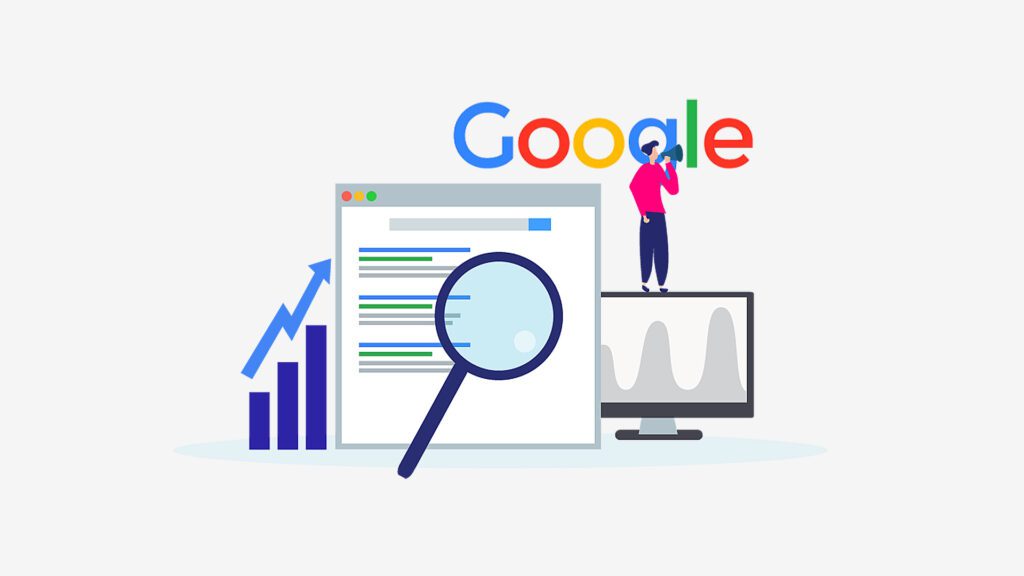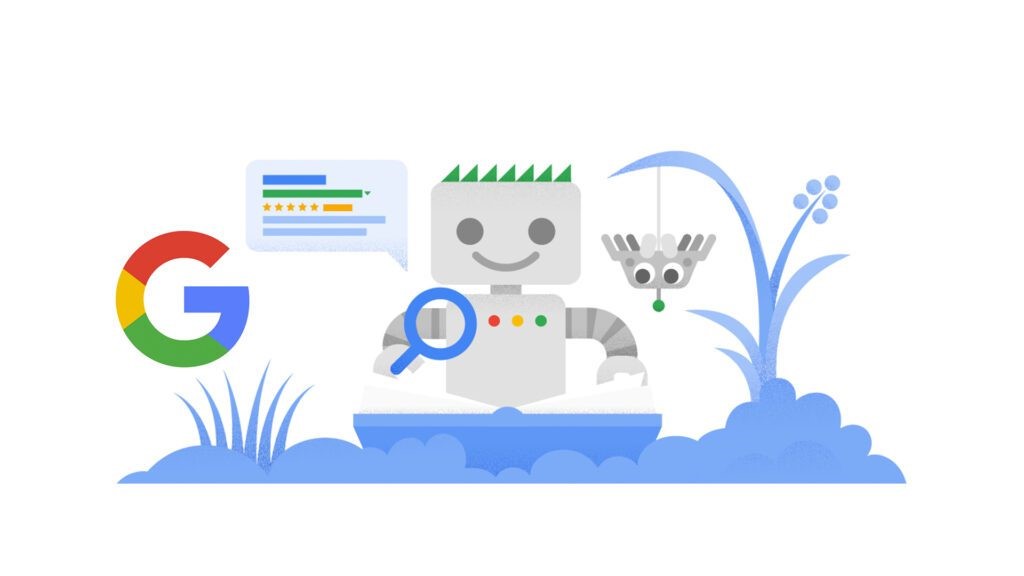What is the Coati Algorithm?
The Coati algorithm is one of Google’s controversial algorithms. Although there is not much information about the details and operation of this algorithm, almost all experts agree that it is used to rank content based on the quality and satisfaction of users. Many believe that this Algorithm replaces and evolves the Panda algorithm. Stay with us to learn more about this Algorithm.

The story of the Coati algorithm
The name of the Coati algorithm, similar to other Google algorithms, is derived from the name of an animal. This Algorithm is among the algorithms that help Google categorize and introduce content to its users based on quality and non-repetition. But where did the story of the origin of this Algorithm begin?
Google has always sought the satisfaction of its users. This search engine has always tried to present the best search results to its users. In the past years, Google checked and prioritized content based on keywords, keyword density, etc. In a short period, many sites and content producers in the field of digital marketing focused on keywords and their repetition instead of focusing on the quality of the content.
Very soon, the sites were filled with titles and headlines unrelated to the content, content with repetition of specific but meaningless keywords. It was time for Google to check the content using different algorithms and prioritize quality and non-repetitive content. Making Google smarter requires the use of different algorithms. For this reason, various algorithms have been introduced over the past years. None of these algorithms alone could help Google choose user-friendly and quality content. Each of these contents was checked from the perspective of quality. One of the loudest algorithms was the Panda algorithm.
The Panda algorithm helped Google to identify low-quality and duplicate content. Google identified and fined duplicate content with the help of the Panda algorithm. Many experts believed that the Panda algorithm was not successful enough in evaluating the quality of content. Therefore, everyone was waiting for the improvement of this Algorithm or the introduction of a new and alternative algorithm by Google. Finally, the new Coati algorithm was introduced, and the Panda algorithm was retired.
Why was the name Coati chosen for this Algorithm?
Like many other Google algorithms, the Coati algorithm is named after an animal. This Algorithm has replaced the Panda algorithm, and one of the main similarities between Panda and Coati is that they are black and white. Of course, unlike the panda, the Coati is not completely black and white and has other colors like gray, gray, and brown.
Maybe the choice of this name wants to convey that this Algorithm does not work in zero and one and does not categorize the contents as good or bad. Another interesting point is that this animal is not large and lazy, unlike the panda. Maybe the choice of this name wants to convey the message that this Algorithm is fast and agile compared to the Panda algorithm.
How does this Algorithm measure the quality of content?
The Coati algorithm is one of Google’s secret algorithms, and there is no detailed information on how it works. Of course, it should be emphasized that the working method of any of Google’s algorithms is not known exactly. However, it is agreed upon that this Algorithm was developed to evaluate the quality of content, and its main criterion for quality evaluation is user satisfaction.
This Algorithm helps Google identify duplicate and poor-quality content and remove it from priority. Of course, Koati’s Algorithm is more about promoting and increasing the score of good content and punishing and penalizing bad and repetitive content is not on its agenda. The punishment that Google considers for low-quality content producers is removing them from the search results.
How does the Coati Algorithm affect SEO practices?
Now that Google uses algorithms such as the Coati to prioritize search results, you should look for quality content production. You should focus on users and produce content based on their needs and desires. Quality content contains a reasonable number of keywords, is useful for users, and is non-repetitive and unique
. With new algorithms, creating content through robots and copywork does not help sites, and spending more time and money on creating content is necessary. Many experts believe that for Google to recognize you as a quality content producer, you need to produce specialized content in your field of activity. The more useful the content you produce for users and meets their needs, the more likely your content will be categorized as quality.
Quality content in the Coati algorithm means user-friendliness!
If you have seriously planned to produce quality content, but there is no change in your SEO status, you should know that according to the Coati algorithm, only quality and useful content can improve your SEO position. The criterion of content quality is the satisfaction and opinion of users. Therefore, no matter how much time and energy you spend creating content, Coati’s Algorithm will not evaluate your content with quality if you do not successfully attract and satisfy users. Therefore, it is better to carefully identify your audience and know their tastes and needs to produce content. Then, focusing on their needs and desires, produce content continuously.

If you produce useful content, don’t worry about changing algorithms!
Cati Algorithm, similar to Pthe anda Algorithm, can be a warning for those who ignore the quality of content. Sooner or later, these contents will lose their position with Google. But if you are among those who produce quality content, you don’t have to worry. This Algorithm and, most likely, Google’s future algorithms are in your favor. Sooner or later, Google will notice the quality of your content, and you will see your SEO position improve. All the new and updated Google algorithms are compiled in a way that helps Google recognize useful and quality content faster and prioritize search results.
Of course, it is necessary to pay attention to the fact that it is still important to continue producing quality content, and it is necessary to be patient and continuously produce quality content. Don’t expect a big change in your SEO position by ordering content production, even if they are of high quality.
What is the Panda Algorithm?
Google’s Panda algorithm was created to prevent the development of undesirable and poor content on the results page. Audience needs are a very important business priority for Google. Google always wants to provide information to its users that meets their needs. Providing users with useful, up-to-date, substantiated, and scientific information keeps Google’s business alive.
The founder of the website Search Engine Land had originally named this update FARMER. However, Google later admitted that this Algorithm was called “Panda” from the beginning. Before the launch of the Panda algorithm, audiences complained about the poor quality, weak, and irrelevant content of sites that appeared on the Google results page. Google designed the Panda algorithm to solve this problem.
The main task of Panda algorithms is to classify the results based on the quality of the website content. The behavior of human users measures content quality. The sites that were affected by the Panda algorithm and their position decreased can take various measures to remove the Google penalty and their ranking drop. Actions to improve the user interface, such as rebuilding pages that have low-quality content, adding high-quality content, removing keywords that are repeated a lot, etc.
What was the purpose of the Panda algorithm?
It was in 2010 that the low quality of website content and the rampant growth of the content farm caused strong criticism from users. In the meantime, the launch of the caffeine algorithm in 2009 increased Google’s indexing power several times. This made the low-quality information indexed in Google faster. All these events put Google’s business, based on meeting the user’s needs to search for the keyword, at risk of destruction.
Google finally prevented this dissatisfaction by designing the Panda algorithm and ranking the content quality of the sites displayed on the search page. Now, producing high-quality text content that meets the audience’s needs has become a fundamental value for Google.
Google Panda algorithm updates
Google first introduced the Panda algorithm on February 23, 2011. On February 24 of the same date, Google published a post regarding an update. They claimed to have launched a major algorithmic revolution in their rankings. This change could affect 11.8 queries (phrases searched by users). This post says:
“Poor content does not provide any useful information to the user and does not add any knowledge to them. Also, many websites’ content is copies of other websites’ content. This Algorithm will improve the ranking of websites with specific, useful, and unique content.
After this update, eHow and wikiHow content farms had to improve their performance. Later updates were even stricter, crossing the line between poor content and attacking acceptable content. The Panda algorithm did not show mercy to any site, and sites that had the following problems lost their good position on the results page:
- Nasty designs
- Too many ads undermined the real value of the content
- Pasting too many keywords on pages
- Having spelling and literary mistakes
- Repetitive sentences and texts
- Poor quality and invalid content
What factors does the Panda algorithm check?
Below are some of the most important factors that are checked by the Panda algorithm:
Thin Content
There is very poor content with very little written text and no credible sources on websites.
Duplicate Content
It is content that appears in more than one place. The problem of duplicate content can also happen on a website. For example, your website has five pages, and you have written similar sentences on each page with a slight change.
Content Quality
It means content that adds very little knowledge to its readers. Poor quality content provides no information to the audience at all.
Trustworthiness of the site
which means content whose sources are not definitive and authentic. Suppose sites want to avoid a Panda penalty. In that case, they should make every effort to be recognized as an authority in their industry so that users can more easily trust and share their personal information.
Content Farm
It means pages with a very low-quality level, and their content is collected from other sites. Typically, such websites hire content producers who produce extensive, low-quality content for the website at very low wages. The goal of such websites is not to satisfy the audience’s needs, but they want to be displayed on the results page for whatever query the audience searches for.
Low-quality user-generated content
You may have seen websites that publish guest blog posts. Posts containing short sentences that lack valid information are considered more personal comments.
High ratio of advertising to content
Maybe you have seen many pages full of paid advertisements while not having much content.


